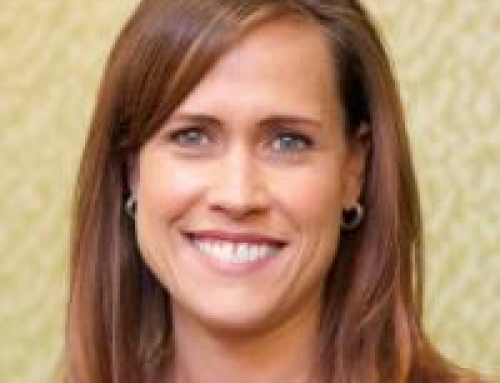 Q: Women remain underrepresented across organizations—especially at senior levels of leadership—a Fall 2015 survey by LeanIn.org and McKinsey consultants found. What are the reasons for this?
Q: Women remain underrepresented across organizations—especially at senior levels of leadership—a Fall 2015 survey by LeanIn.org and McKinsey consultants found. What are the reasons for this?
A: Increasing the Influence of Women in the Workforce is important as underrepresentation of women in senior leadership positions continues to be problematic. Common explanations have focused on gender-based discrimination where a “think leader, think male” phenomenon has created the glass ceiling effect. Here research studies have found that we often associate successful leaders with characteristics aligned with the male stereotype of being independent, assertive, decisive, etc.
Career tracks have also been a contributing factor. Women traditionally have been more dominant in the workplace in staff or auxiliary positions rather than those line positions which have a direct impact on the bottom line of the organization and which often are a stepping stone to more senior leadership positions.
Lastly, women are more likely to leave the workforce intermittently to have and raise children. Women head the majority of single parent households and are often responsible for a greater percentage of parenting duties in two-parent households. As a result, their careers are more likely impacted by domestic/ parenting roles. Even when it does not, there may be a family-work conflict bias that leads to fewer promotions and opportunities for women to achieve senior leadership roles in organizations.
Q: Where does the US rank in comparison to other industrialized countries as to number of women in the workforce and in leadership?
A: Women currently represent 47 percent of the total U.S. labor force and this number continues to rise. Women of working age (16 and older) have a 58.6 percent participation rate in the labor force. The U.S. female labor force participation rate is five percentage points lower than the 28-country average for the EU. As of mid-2014, six European nations had female labor participation rates of at least 85%. They are Slovenia, Sweden, Portugal, Iceland, Austria and Switzerland. Canada’s female labor participation rate is 82%.
A key reason for this development is that European nations are far more likely to offer extended paid maternity leave (as well as protections for women to return to their jobs after having children), government subsidized day care and other policies designed to keep women in the workforce.
In terms of women in leadership positions, only 14.2% of the top five leadership positions at the companies in the S&P 500 are held by women, according to a CNN Money analysis. United States ranks in the bottom 10 for the percentage of women in senior management positions, with women occupying just 22 percent of senior roles, a 2014 study from the Grant Thornton International Business Report found. It is well behind countries such as Russia, Indonesia, Latvia and the Philippines, all of which have more than 40 percent of women in such positions. You can understand why we are concerned with Increasing the Influence of Women in the Workforce in the United States particularly.
Q: Parental responsibilities create periods of slow career growth for women, from needing to take time off or work reduced hours or passing up promotions. Big companies have been the best at offering programs to help with this. But small businesses are still not where they should be. Are you seeing any improvement with this?
A: Yes, small business are no different then larger employers in their need to attract and retain the best workers. More and more frequently, small employers are recognizing that a key to a competitive workforce is to implement more meaningful work-life policies and Increasing the Influence of Women in the Workforce.
There has been a continued rise in the last few years of employers offering paid parenting leave and job sharing. Many more employers provide flexible work schedule, staggered hours, and have work-at-home options.
Policies like these are vital to Increasing the Influence of Women in the Workforce, but companies must guard against the perception that by taking advantage of such policies, a woman will tarnish her professional image. Small businesses must work to banish this belief from their corporate culture.
Q: Looking back to 1976, women comprised 37% of the workforce. Today, the percent of women in the workforce is 47% and predicted to be over 50% before 2018. What other impacts do you see as more women are in the workforce are making their mark?
A: As more women enter the workforce and the millennials proceed through their careers in higher level positions a new trend is that when it comes to style, the majority of employees like the way women lead over men.
The clear majority of Americans prefer executives who use newer, more collaborative leadership styles, such as listening, consulting and asking questions, the study by financial business solutions provider Pershing discovered. The research shows that 7 in 10 Americans associate these leadership styles with women. By contrast, 77 percent of those surveyed attribute “traditional” leadership approaches, such as giving orders and employing the reward/punishment model, with men.
It is important to keep in mind that change evolves slowly and that Increasing the Influence of Women in the Workforce takes time. But as a function of time we are going to see better work/life policies, more effort toward gender equality, and programs in place to develop future female leaders in both large and small employers. It will not be because it is a nice thing to do but rather a reflection of the changing cultural values of American society overall and a business necessity. The generation of females in college today should have vastly greater opportunities for career and work/life balance success than any previous generation.
Q: The recent change by Department of Defense Secretary Ashton Carter as to finalizing rules for women in combat positions seems an important historical step for military equality and to allow women to move up in the ranks of the military. What outcomes to do you foresee over the next ten years with this improvement?
A: Starting this past January, the Defense Department lifted all gender-based restrictions on military service starting. This historic change will pave the way for women to serve alongside men in combat units, including the most physically demanding and dangerous roles such as the Navy SEALS and Army Special Forces. In the Marine Corps, 38 percent of the jobs were off-limits to women and in the Army, about 9 percent. Like the Marines, the Army had prohibited women from serving in the infantry or as special operations commandos. The military’s move to let women fill jobs currently limited to only men, such as infantry, armor and reconnaissance are milestone decisions and a welcome step to women’s inequality. According to the Center for American Progress, women make up 50.8 percent of the U.S. population but as previously mentioned only 47 percent of the overall labor force. This move by the military, along with the potential for the first female President, will help to change cultural norms and reduce biases and stereotypes in our society overall and workplaces, specifically, as a function of time over the next decade that should result in reducing the barriers to women equality in the workplace.
Q: In the academic world, what is the current state of affairs of gender equality from what you see and read?
A: Women make up a majority of the students in American colleges and universities. Women comprised 57 percent of undergraduate enrollment and 59 percent of graduate enrollment. For the past seven years, women earned a majority of doctoral degrees awarded at US universities at a rate of just over 52%. However, only 42 percent of all full-time faculty members are women. Further, there are far fewer women than men at the top of the academic hierarchy; those women are paid somewhat less than men, and they are much less likely than men to have had children. At the bottom of the academic hierarchy—in the adjunct and part-time positions—there are far more women than men. So just as we see in corporate America, there is still a long way to go to achieve gender equality in academia and while there are positive trends toward greater equality, the pace of change is slow. Too slow.
Q: Generations in the workplace bring different views to the world of work. Millennials as our newest generation of full-time workers aspire the most of any generation to be in management according to research from www.pewssocialtrends.org. Is this generation more gender-blind, meaning they value each other regardless of gender?
A: More than one-in-three American workers today are Millennials (adults ages 18 to 34 in 2015), and this year they surpassed Generation X to become the largest share of the American workforce, according to new Pew Research Center analysis of U.S. Census Bureau data. It’s worth noting that the Millennial population as a whole (not just its workforce) surpassed Baby Boomers this year as the nation’s largest living generation, according to the Census Bureau. Millennials are more color and gender blind than any previous generation which gives us hope in the Increasing the Influence of Women in the Workforce. They will be the first truly multicultural cohort. Fifty-one percent will not be Caucasian. They have an expectation that everyone in the workforce should be treated equally, regardless of race, gender, religion or sexual orientation. The defining characteristics of Millennials are the attributes that may make them outstanding leaders — collaboration and empowerment, a social conscience, the self-confidence to take on leadership roles and a strong desire to create a diverse and equal playing field.
Q: Which women leaders in corporate America today are successful role models for young female workers to learn about and learn from?
A: While women hold only 4.6% of CEO positions within the Fortune 500, and only 14.6% of executive officer positions overall, fortunately for today’s young females looking to become tomorrows’ future business leaders, there are many strong female leader role models to study and learn valuable lessons from. Any list should include:
- Mary Barra, CEO, General Motors
- Sheryl Sandberg, COO, Facebook
- Susan Wojcicki, CEO, YouTube, Google
- Meg Whitman, CEO, Hewlett-Packard
- Ginni Rometty, CEO, IBM
- Indra Nooyi, CEO, PepsiCo
Q: What books do you recommend for aspiring young female leaders to read?
A: Here are a few but there are others worthy of any list for future women leaders.

 2.Unwritten Rules: What Women Need to Know About Leading in Today’s Organizations, by Lynn Harris
2.Unwritten Rules: What Women Need to Know About Leading in Today’s Organizations, by Lynn Harris 3.,The Tao of Womanhood: Ten Lessons for Power and Peace by Diane Dreher
3.,The Tao of Womanhood: Ten Lessons for Power and Peace by Diane Dreher 4.What’s Holding You Back? 8 Critical Choices for Women’s Success, by Linda S. Austin
4.What’s Holding You Back? 8 Critical Choices for Women’s Success, by Linda S. Austin 5.Women Don’t Ask: Negotiation and the Gender Divide, by Linda Babcock and Sara Laschever
5.Women Don’t Ask: Negotiation and the Gender Divide, by Linda Babcock and Sara Laschever 6.No Seat at the Table: How Corporate Governance Keeps Women Out of America’s Boardrooms, by Douglas Branson
6.No Seat at the Table: How Corporate Governance Keeps Women Out of America’s Boardrooms, by Douglas Branson 7.Lean In: Women, Work, and the Will to Lead, by Sheryl Sandberg
7.Lean In: Women, Work, and the Will to Lead, by Sheryl Sandberg
Q: What is your advice for women who are eager to advance in their career while maintaining a well-balanced family life?
A: Figure out what you want your life to look like at 45.
Choose a career that will give you the gift of time. Certain careers provide more flexibility and are more forgiving of interruptions. Female entrepreneurs, for example, do better than female lawyers in combining career and family—and both do better than corporate women. The key is to avoid professions with rigid career trajectories.
Choose a company that will help you achieve work-life balance. Look for such policies as reduced-hour schedules and job-protected leave.
Promote yourself. Although self-promotion is a key step for women who want to get noticed in the workplace, many of them feel uncomfortable speaking out about their accomplishments.
Related, write down your achievements. This documentation will help you remember your accomplishments when it’s time to advocate for a promotion or apply to jobs.
Ask for more. Negotiating is one of the most challenging tasks for young women professionals. Men negotiate more often than women and feel more comfortable doing it. Negotiating is key to advancing in your career.
Take risks. When it comes to carpe diem, men are much more likely to seize the day (and job) than women. A 2008 Hewlett-Packard Co. report found women will apply for a job if they believe they are 100 percent qualified, yet men will do so if only 60 percent qualified.
Use assertive language. Young women can convey confidence in the workplace by using an assertive tone with managers or peers. For instance, instead of asking to do something, say you want to do it. By changing language or demeanor, women will both appear and feel more self-assured.
Build your network. Finding the right job or getting promoted is all about who you know. So start building your social capital from the very beginning and never stop.
Cultivate sponsors. Women seeking to move up the career ladder were once advised to find mentors. But new findings suggest that mentoring may not be as beneficial to women as it is to men. An ongoing project by Catalyst found that men’s mentors are more highly placed than women’s—and more influential in helping them secure key jobs and promotions. Instead, career development experts encourage women to seek out sponsors.
Be honest with yourself. This is the hardest one, but also the most necessary. You should ask yourself periodically, “Am I happy with all this?” And to follow up by looking at how well you’re doing of balancing everything. Be honest — this is your life we’re talking about.
THIS IS NOT LEGAL OR FINANCIAL ADVICE
Jerry Schoenfeld is an Associate Professor of Management in the Lutgert College of Business at Florida Gulf Coast University. He is the past Chair of the Management Department and Director of the M.B.A. program. He is also the founding Director of the Institute for Advances in Human Resources which was part of FGCU’s Center of Leadership and Innovation. Jerry earned his doctorate degree in the areas of Human Resource Management and Strategic Management from the University of Pittsburgh. Contact Jerry at gschoenf@fgcu.edu.

Jean (JJ in HR) is a certified senior-level human resources executive/consultant, adjunct professor, management trainer, professional speaker, resume writer, career coach, LinkedIn profile builder, and published author.









